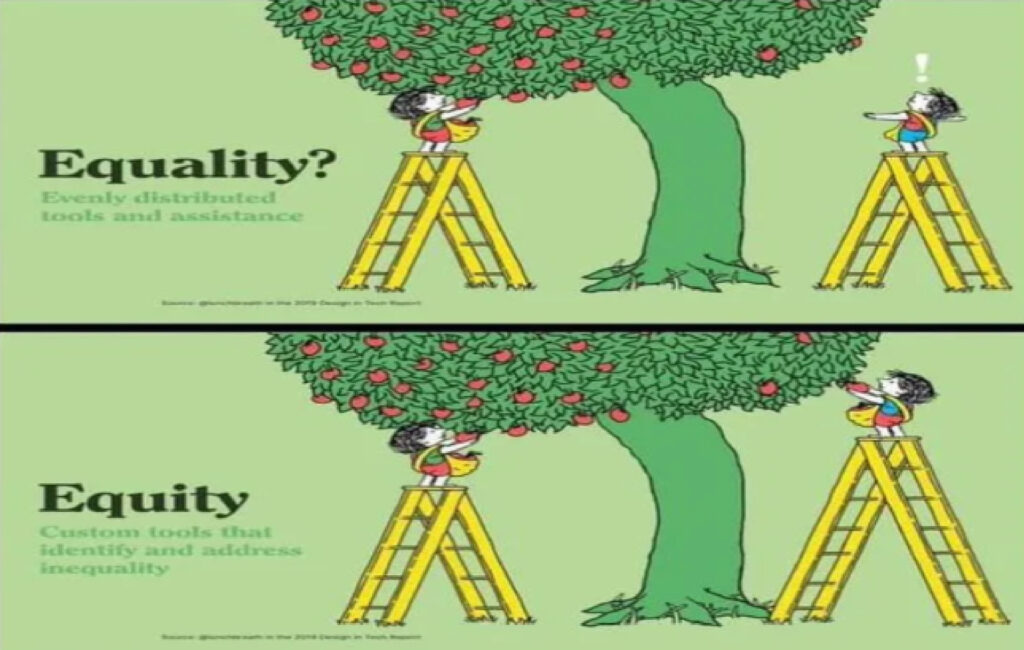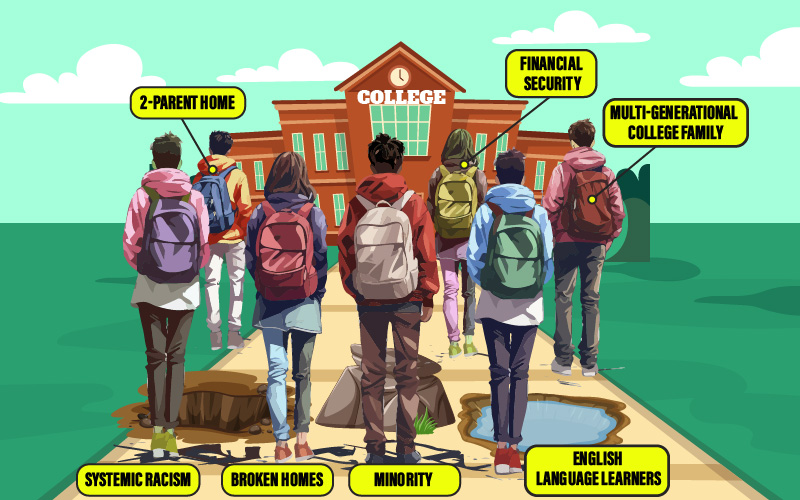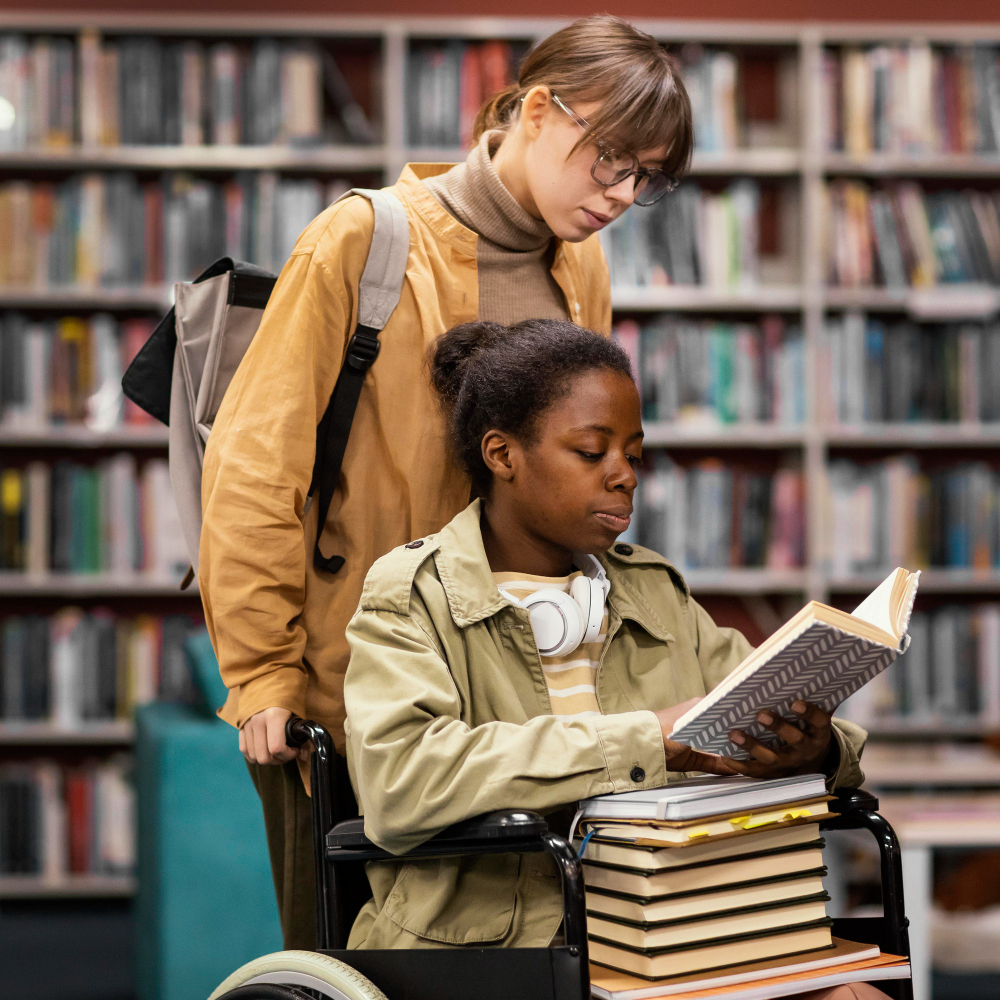Equality – The Answer to Increased Opportunities for All or A Band-aid Over a Wound?
The idea of true equity in education has been a source of fascination and advocacy for me throughout my professional career. My interest began in Teachers College in 2000 when one of my professors initiated the debate on the feasibility of equity in the face of a preoccupation with equality. It came amidst growing cries in America and other parts of the world for equality of economic, social, and educational opportunities for minorities, especially those of African ethnicities. The controversial prompt read:
“The push for minorities’ right to equality is not admirable, but laughable and woefully inadequate in the face of the more relevant need for equity.”
The prompt initially elicited outrage and some form of discombobulation among us students. After all, was not equality a great concept grounded in fairness? The debate ultimately sent a significant percentage of my cohort down the rabbit hole into dissecting arguments related to fairness, justice, and the idea of a workable solution geared towards the establishment of favorable opportunities for all regardless of race, ethnicity, socio-economic background, or the still somewhat taboo category- immigration status. The most impactful lesson we learnt from that discourse was to rethink the priority we have always placed on mere equality and confront the conundrum that treating everyone equally is not just unfair, but perpetuates and provides convenient rationalization for systemic racial disadvantages especially in the educational opportunities we provide for learners from the preschool stages all the way to college. Indeed, per the Declaration of Independence() all [men] may have been created equal, but all were not, by virtue of their social, economical, racial or ethnic backgrounds, born into situations that predisposed them to equal quality of life. Equity therefore assesses the desired outcomes and tailors the provision of opportunities that would best equip each individual or common group to meet that intended outcome(see Fig. 1).

Equality is the Enemy of Educational Equity
At the forefront of all effective educational initiatives are the main stakeholders’ -the learners- interests. Theories in education support the notion that learning can only be deemed effective when the learner is invested, takes an active role in his or her learning, and is provided a relatable context that incorporates and intentionally pays attention to his or her interest, intellectual variances, culture, and home dynamics. Since the last two decades have yielded an increasingly diverse learning space at all levels of learning(Lenhoff & Gottfried,2022)- the pertinent question is how open and equipped are schools and educators to facilitate this diversity. Can we with fidelity say we are transcending implicit biases, and systemic social and economic barriers to create active learners? In answering all these questions we must acknowledge that all the funding, workshops, professional development seminars, and theoretical wealth of knowledge are in vain if they are not administered through the lens of equity Equity therefore is simply fairness, which may include, but is not always the same as equality. Because students’ circumstances are not the same, equity focuses on everyone getting what they need to improve the quality of their circumstances, not about everyone receiving the same thing (Ainscow,2015; Interaction Institute for Social Change 2021; Hammond, 2015 ).
Inequity in High Schools – Is College a Pipe Dream for Some Students?
Inequity plagues all levels of education. As I pondered on how to channel my passion for equity into actionable mindsets that contribute meaningfully to increased measurable equity, the questions that underpinned my consideration were: Is the issue of inequity in schools an intractable one grounded in unassailable social and economic constructs, and how feasible is my impetus to make real change?
There have been strides made to increase initiatives that have positively impacted equity in schools at all levels. Advancements in catering to learning needs, physical deficiencies, special education demands, and some English Language have been commendable. Notwithstanding these improvements, my experience as a high school educator reveals the stubborn and worrying reality that students are leaving high schools with glaring disparities in their levels of preparedness for college (Fahle et al, 2020; Southern Coalition for Social Justice, 2022). The students on the lower spectrum of college preparedness are often those plagued with absenteeism due to more punitive disciplinary measures, limited enrichment opportunities, poor family structure, and poverty. In addition, due to the scarcity of opportunities, they are often deemed slow learners incapable of mainstream instruction. This is true mostly for minorities, English language learners or both. Recent data in North Carolina and other Southern states revealed that in the 2021-23 school year 87% of the total number of students who were suspended identified as Black or African American, Latino 4.9% and Whites 4.4%. The same report asserts that white students were 2.6 times more likely to score “Career and College Ready” on final exams than their black counterparts (Southern Coalition for Social Justice, 2022).
MACC to Increase College Readiness?
In identifying the glaring disparities in college readiness, the question-now what- loomed. While this issue presents as a gigantic one, that is grounded in stubborn and systemic social and policymaking practices, my training at the master’s level has reinforced the fact that a leader, not only investigates an issue, but seeks to unearth specific gaps and to take steps feasible to availability of expertise and resources to address it. It is important to continue the dialogue and create increased awareness of the fact that despite the attention that this issue has received in recent decades, college attendance and retention percentages in minority, poor and English learners high school leavers continue to fall significantly below their white and more counterparts.
My research has established that a plan of action that is likely to prove effective in addressing the inequity of opportunities for minority high school students must encompass Mentorship, Academic Support Centers, Career and Technical education(MACC) in all high schools and Career exploration programs for all students regardless of background. These initiatives are cost and personnel effective, and promise
| Mentorship: Pair students and their families from as early as 10th grade with college students and professionals in their fields of interest( preferably alumni ) to provide ongoing guidance, insights, and encouragement in the quest for college. May be facilitated in person and via technology |
| Academic and social support centers: Normalize in-school and after-school support staffed by teachers, volunteers, and online programs to provide ongoing support in core subjects targeting students who may need extra social or academic support. |
| Community Career Exploration: regular hours program that connects students with local business for internship and job shadowing. |
| Career and Technical Education Learning Pathway(CTE): expose students to vocational training certifications along with academics to increase their awareness of viable options after leaving high school |
The interrelated issues of poor equity create a cycle of disadvantage that relegates college to a distant goal rather than an achievable reality( Darling- Hammond,2013; Hammond,2015). Addressing these concerns requires systemic change, targeted support, and inclusive policies that MACC embodies to ensure all students have the resources and opportunities needed to succeed.
References
Ainscow, M. (2015). Struggles for equity in education: The selected works of Mel Ainscow. Routledge.
Darling-Hammond, L. (2013). Inequality and school resources. Closing the opportunity gap: What America must do to give every child an even chance, 77.
Lenhoff, S. W., Singer, J., & Gottfried, M. (2022). Thinking Ecologically in Educational Policy
and Research. Peabody Journal of Education, 97(1), 1–5.
https://doi.org/10.1080/0161956X.2022.2026715
Fahle, E. M., Reardon, S. F., Kalogrides, D., Weathers, E. S., & Jang, H. (2020). Racial segregation
and school poverty in the United States, 1999–2016. Race and Social Problems, 12(1), 42–56.
https://doi.org/https://doi.org/10.1007/s12552-019-09277-w
Hammond, Z. (2015). Culturally Responsive Teaching and the Brain: Promoting Authentic
Engagement and Rigor Among Culturally and Linguistically Diverse Students. Corwin
Publishers
Hutmacher, W., Cochrane, D., & Bottani, N. (2001). In pursuit of equity in education. Using international indicators to compare equity.
Jurado de Los Santos, P., Moreno-Guerrero, A. J., Marín-Marín, J. A., & Soler Costa, R. (2020). The term equity in education: A literature review with scientific mapping in web of science. International Journal of Environmental Research and Public Health, 17(10), 3526. https://doi.org/10.3390/ijerph17103526
“Interaction Institute for Social Change (2021) Artist: Angus Maguire.” https://interactioninstitute.org/illustrating-equality-vs-equity/
National Association for the Education of Young Children. (2019). “NAEYC Advancing Equity in Early Childhood Education” Position statement. https://www.naeyc.org/sites/default/files/globallyshared/downloads/PDFs/resources/position-statements/advancingequitypositionstatement.pdf




This is such an important topic! The difference between equity and equality is often misunderstood, but it’s crucial to address if we want to level the playing field. College access shouldn’t be determined by a student’s zip code or background. More discussions like this are needed to drive real change.